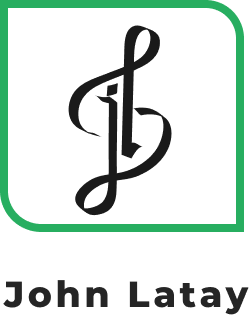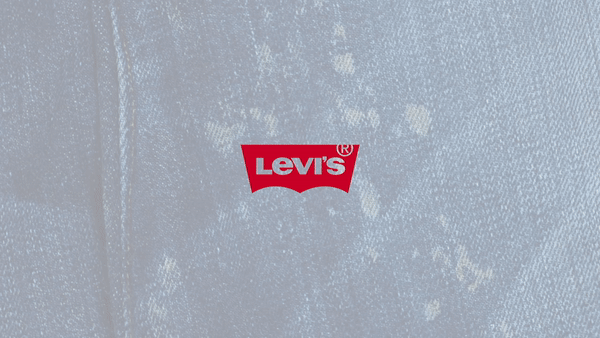User Research, User Experience, Interface Design
Levi's Reuse & Recycling Initiative: Web Platform
At a Glance: my role and contributions!
Role: User Researcher, Prototype Designer, Interaction Designer, User Testing Support
Tools: Figma, ProtoPie, Illustrator
Team Members: Dalia Alahmad, Jennifer Ho, Karen Lim, Katherine Kim, So Hyun Park
Date: Oct. - Nov. 2018
Contributions: Helped created survey questions and conduct user tests/interviews
Established a user persona and helped create a journey map framework and user flow
Created medium to high fidelity interactive prototypes with working animations
The Levi’s Reuse & Recycling Initiative is a web platform that provides the necessary information on the Reuse and Recycling Initiative for customers who want to donate but are confused about the process. Our project aims to connect customers with Levi’s goal, to be a brand that is ethical and environmentally sustainable.
Identifying The Problem
Context: Statistics & Facts
After some initial research on environmental sustainability, my team and I were able to evaluate and understand the severity of textile waste ending up in landfills. One of the biggest factors that contribute to this issue of textile waste is fast fashion, which can be defined as cheap and trendy clothing that is not used for very long. We then identified which stakeholders or companies may be part of the issue and if they had any solutions to the growing textile waste, in which we came across Levi’s.
Insights & Survey Results
Gathering more research, my team and I pushed out survey questions for the purpose of trying to see if people knew about Levi’s recycling programs. What we discovered was that out of 119 survey responses, only 2.5% of them knew about the recycling programs. The insight that we’ve taken from this is that due to the disconnect between Levi’s and its customer, the information on Levi’s recycling program was not accessible enough for customers to see and that customers had little to no knowledge about what happens to their clothes after.
Process & Planning
After gaining some insights, we moved forward with our project and tried to identify what our team’s, business’, and persona’s goals were. Planning this lead to a better understanding of how and what we wanted to design, what we wanted people to know about Levi’s as a brand, and who specifically we were trying to target.
Finalized Stakeholders
User Persona
Summarizing our research and findings, my team and I then proceeded to make a persona that could best identify who would specifically be using our proposed web platform for Levi’s. In short, our target audience was best represented as someone who genuinely cares about the environment, does research on recycling companies and their processes before donating to them. Moreover, this specific person wants to know how their contribution can make a difference in the environment.
Journey Framework & Touchpoints
After having created our persona, we then focused on creating a user journey framework. This user journey framework was divided into the phases of recognizing, receiving information, and actions + results. As well, this journey framework was used as a structure to understand the engagement levels of our user persona as they go through each phase. Given the scope of the project and the amount of time we had to complete it, we focused on how they receive information.
Sitemap & User Flow
With the creation of our user journey framework, my team and I then created a sitemap to display the structure of the website as well as see how and where users could interact with the page. By creating this it allowed us to really focus on areas where we should really be thinking about the experience of our users and how they will access the content that they specifically look for.
Levi’s Experience Pyramid
Referencing the UX design pyramid, we made one specifically for Levi’s. Starting with elegance, we wanted to ensure that all of the information that is needed is cohesive and direct. Clarity is for clear intentions and also means ensuring that “where the donation goes” is clear to people. Care, to show Levi’s transparency and acknowledgment for being the brand that they are. Innovation within the prototype is where we tried to create personal, relatable connections to the initiative instead of just stating information. Lastly, we have an impact, with hopes that all of these things together will scaffold and inspire intrinsic motivation for a customer to donate.
Sketched Wireframes
Before getting into the final designs of our finished product are some initial sketches a few of our team members had created and collaborated on. In these sketches, we tried our best to present information so that it is easily accessible and digestible. Because we were able to communicate our ideas through these sketches, translating them into digital was simpler and saved us a lot of time.
Mind Mapping
Nearing the end of our project for Levi’s, my team and I decided to map out every aspect that we wanted to touch upon for our prototypes and final presentation. We wanted to make sure we weren’t thinking in a linear way, and this mind map helped focus our thoughts on the iterations for our prototype. It was also a way to make sure we’ve answered everything we could for the project.
Design
Direction & Access of Information
By reducing cognitive overhead, keeping the layout of the web page clean and simple, Levi’s customers are now able to quickly see how they can take part in the program as information is provided to them more clearly.
I:Collect & Re/Done Partners
We introduced Levi’s recycling partners I:Collect and Redone. The purpose for doing this is that it answers questions such as: who is involved with Levi’s recycling program? and what happens when clothes are donated.
Interactive Map & Curated Stories
With our interactive map and through the form of storytelling, we’ve created curated stories. This allows customers to see how their donated clothes can make an impact on a community and put trust in the company.
The Jean Journey
Providing the customer with a story to which they can personally relate. We want to provide this connection as a way to create intrinsic motivation and encourage interested customers to donate to Levi’s recycling programs.
Challenges
Given the 4 weeks, we had to find a client, an opportunity, and build a solution around them, we were unsuccessful for the first two weeks. This was primarily due to the reasons that we were not able to understand a client with rich brand pillars and that because we were so focused on finding an innovative solution, that we just kept presenting new clients for 2 weeks straight. Moreover, because we only had two weeks left to finish this project, we knew that we weren’t able to include everything we wanted in our design. This worked in our favour as we shifted our focus on the things that we could deliver on time, allowing us to still have an impactful and memorable project.
Final Thoughts
The failures I specifically had at the beginning of this project, became the most crucial learning point for me. As an individual, it really struck me to realize the amount of work user experience designers need to put in to be able to land a successful piece of work. As well, it’s very clear now that successful projects aren’t just about the innovations, but also about the way they can make an impact on people and their lives. My team and I achieved this through the form of storytelling, understanding the impact a community can make, and having clear and direct visuals and copy-writing. These elements gave our project an emotional appeal and the feeling of empathy and empowerment as customers can now see the benefits of donating their clothes.
© John Latay 2021

